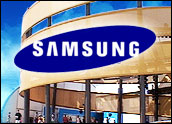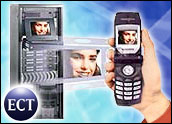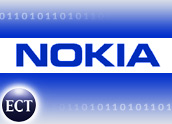
Since NTT DoCoMo successfully launched its i-mode service in 1998, there have been varying degrees of hype about the future of mobile content and the revenue potential of applications run on wireless data networks.
Early versions of wireless application protocol (WAP) in Europe and North America did not garner much interest from consumers, but with improvements in technology and business models, momentum is steadily building.
The market for mobile content providers is well developed in Asia. According to IDC, wireless gaming revenues alone in the Asia-Pacific region (excluding Japan) will rise from US$237 million in 2003 to roughly $1.3 billion in 2008.
Payment Via Phone Bill
Already in Europe, mobile content companies are realizing hundreds of millions of euros in annual revenue from delivering content to consumers’ mobile phones. Although mobile content in North America is just now gaining significant traction, it has similar long-term potential.
Micro-billing on the service-user’s phone bill makes payment for content straightforward, and consumers are accustomed to paying for incremental services on their phone — a notable difference from content provided over the wired Internet.
A study released by Juniper Research looked at the worldwide micropayment market with an emphasis on the mobile channel. Juniper projects that the global mobile commerce market, excluding mobile entertainment, will become a $40 billion industry by 2009 fueled by a growth in micropayments.
Juniper reports: “Large numbers of small payments will make up the vast majority of sales via mobile phones, with the average Western European making approximately 28 transactions a year via the mobile phone by 2009. The average cost of each transaction in 2009 in Western Europe is expected to be worth approximately $3.00.”
Both online and on the phone, a lot is riding on consumer’s ability to pay very little, quickly, securely and conveniently.
Mobile Content Services
The economies of scale also work strongly in favor of a mobile content provider. A single service, once developed properly, can be delivered to millions of paying customers at a very small cost. Typically, the wireless carrier handles the billing in exchange for a percentage of revenue, passing along the remainder to the mobile content provider.
The mobile content services that make the most money today in North America follow the pattern first observed in Asia, with personalization generating the most initial interest — ring tones, logos, wallpapers, screensavers, etc. However, this will shift quickly to more complex applications, including interactive java games, stock tickers, mapping systems and video on demand. And mobile consumers will willingly pay for these services.
A survey conducted late last year by ForceNine Consulting and Wirthin Worldwide and released by Harris Interactive revealed that about 40 percent of U.S. adults with mobile phones who use non-voice applications on those phones also pay extra for them.
The study found that although the charges amounted to just 10 percent of these users’ bills, non-voice app users tend to have higher than average bills.
Andrew Roscoe, partner with ForceNine Consulting, notes, “because non-voice services are in their early, high-growth stage, they are already having an important impact on ARPU [average revenue per user] growth, as was pointed out by several carriers in their second quarter 2004 earnings announcements.”
Complex Development
Noah Elkin of eMarketer points out: “Monthly average revenue per user for voice services has been falling for several years and the pace of decline will accelerate in the next three to five years, putting greater pressure on operators to grow their subscriber rolls. Data service ARPU and revenues, on the other hand, are trending in the opposite direction, and operators increasingly will depend on data services (meaning non-voice content and applications) to bolster their balance sheets.”
All of these opportunities in the mobile content space do, however, come with a challenge. Development of Internet content is relatively straightforward, with many content providers developing only for one browser. Development in the wireless world can be much more complex.
There is a wide range of end-user devices available on the market. On a typical wireless carrier, more than 100 types of handsets all supporting some variety of wireless data services are actively operating on the network. Most of these devices support text messaging and some flavor of WAP service. Dozens of them support picture messaging, and a handful today support video on demand services.
Each handset has a different profile, with varying screen height and width, support for different graphic file types, monophonic or polyphonic ring tone capability, compatibility with various flavors of WAP, availability of a range of java classes for application support, and so on. To successfully launch a mobile content service, it is critical to understand the profile of a wide variety of handsets.
Thankfully, the handset manufacturers do publish a detailed profile for each device released on the market. In many cases, however, last minute changes during development make these profiles inaccurate. As a result, most mobile content providers will still have to perform tests against a wide variety of handsets before finally launching a service.
Complete Testing Necessary
The consequences of incomplete testing in some cases can be rather extreme. If a handset cannot support a given content type, users might end up paying for a service that their device cannot download successfully. If a handset does not support a particular java class, it might successfully download the application, but it will not be usable by the paying customer.
Handling customer support issues that involve billing problems will quickly erase the benefits inherent to mobile content services. And that does not even address the damage to the brand from a less than optimal customer experience.
Complete testing of a mobile content service on dozens of handsets can be an onerous task. A simple solution might be to limit availability of the service to a handful of strategically chosen devices, but this would, of course, shrink the number of potential customers for your service. The best answer: find a way to automate testing across a wide range of handsets.
Today there are two major solutions to this problem: automating tests on actual end user handsets, and running an accurate software simulation of these handsets. By doing this, providers can assure customers that what they are paying for works. This can enhance brand loyalty.
As the mobile content market continues to grow, there are numerous opportunities for creative companies to launch unique and profitable services. By recognizing the challenges inherent to these services and by resolving them early, providers can ensure a high-quality experience for all consumers, encourage loyalty and maximize the potential market opportunity for everyone.
Howard Buzick is senior product manager, wireless solutions, Keynote Systems.
















































Social Media
See all Social Media